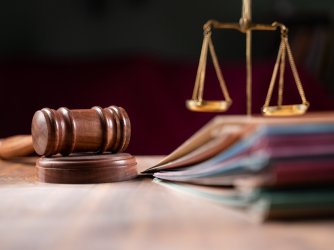Table of Contents
Supreme Court considers when government ‘persuasion’ becomes unconstitutional coercion
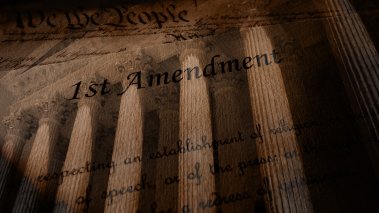
Shutterstock.com
The First Amendment bars government censorship, but that doesn’t stop some public officials from trying. While some censor the old-fashioned way, others get creative.
According to the National Rifle Association, New York state officials took the creative route, engaging in “jawboning” — that is, coercive bullying — to stifle the gun rights group’s speech. Rather than censoring the NRA outright, the head of New York’s Department of Financial Services warned the financial institutions she regulated against doing business with the NRA, because it “sends the wrong message.” Her warning was echoed by former Governor Andrew Cuomo, amplifying their less-than-subtle threat that institutions partnering with the NRA might face regulatory consequences.
The scare tactics worked: Some institutions fell in line, cutting ties with the NRA. The group sued, alleging the pressure campaign violated the First Amendment, and the case — NRA v. Vullo — is now before the Supreme Court.
Representing the NRA in today’s oral arguments, NRA v. Vullo, ACLU Legal Director David Cole explained the First Amendment threat. “This was not about enforcing insurance law or mere government speech,” he said. “It was a campaign by the state’s highest political officials to use their power to coerce a boycott of a political advocacy organization because they disagreed with its advocacy.”
Whether censors target left- or right-leaning speech, whether they openly censor or hide behind suggestion and subterfuge, FIRE will shed light on their activities and work toward a future where state coercion no longer casts a shadow on people’s right to speak freely.
During the hearing, the Justices weighed this claim against Court precedent and asked probing questions of both sides in an effort to determine whether the New York officials’ actions rise to the level of a First Amendment violation. In doing so, Justice Samuel Alito focused on an issue at the heart of this case: the meaning of coercion.
On that question, “I can think of a spectrum,” he said:
On one end of the spectrum, a government official says, “Look. Suppress this speech and if you don’t do it I have legal weapons I can use against you and I’m going to punish you using those.” That’s very clear coercion. At the other end, the government official who has no authority to do anything for any practical purposes to the entity that the government official is speaking to says, “You should do this. It would be a good thing to do. You’d be a good citizen if you did it.”
Alito asked how to define when government action “goes too far along that line,” and he later offered a potential answer.
“This is a First Amendment case,” he said. “All [the NRA] need[s] to do is show that the desire to suppress speech was a motivating factor. They don’t have to prove that regulatory action would have been taken even if [former New York State Department of Financial Services superintendent] Vullo didn’t have this motivation.”
In FIRE’s amicus curiae — “friend of the court” — brief, filed jointly with the National Coalition Against Censorship, The Rutherford Institute, and the First Amendment Lawyers Association, we argued the Court should “make clear government officials cannot evade the rule of law by framing censorship demands as informal requests,” explaining that:
Indirect and informal methods of censorship have proliferated in recent years, with examples from across the political spectrum. While New York leaned on businesses to cut ties with the conservative NRA, Florida’s governor acted to revoke favorable tax status for what he called the “woke” Walt Disney Corporation because it had the temerity to oppose his education initiatives. State attorneys general have threatened retail stores for selling LGBTQ-themed merchandise, while governors have threatened “aggressive enforcement action” against both public and private colleges that fail to crack down on campus speech. Both then-President Trump and President Biden have threatened to revoke online platforms’ immunity under Section 230 of the Communications Decency Act due to their displeasure over company policies.
These efforts occur at all levels of government and take myriad forms, but all are attempts to fly under the First Amendment’s radar. . . . This Court has forged strong substantive and procedural protections for freedom of expression, but those formal protections can be circumvented if informal speech restrictions are not kept in check. The First Amendment cannot become a Maginot Line.
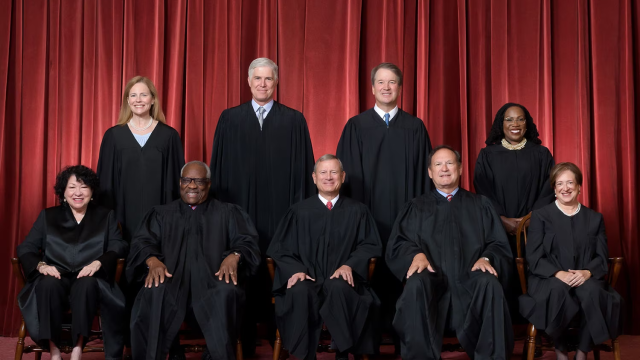
NRA case shows the Supreme Court must stop informal censorship
News
The Supreme Court should provide a clear test to end informal censorship, where the government operates behind closed doors to influence speech.
To put a quick stop to similar threats and demands, our brief urged the Court to establish clear criteria for identifying this slippery form of censorship. In this case, that means first and foremost reversing the decision of the U.S. Court of Appeals for the Second Circuit, which ruled in favor of the New York state officials, and explaining the factors that define coercive behavior.
In Murthy v. Missouri, another case heard today, we’re similarly urging the Court to contend with the serious threat to free speech posed by government jawboning.
“This Court has forged strong substantive and procedural protections for freedom of expression,” says our NRA v. Vullo brief. However, “formal legal protections count for little if public officials can evade them simply by couching censorship demands as veiled threats and vague demands for cooperation.”
Whether censors target left- or right-leaning speech, whether they openly censor or hide behind suggestion and subterfuge, FIRE will shed light on their activities and work toward a future where state coercion no longer casts a shadow on people’s right to speak freely.
Recent Articles
FIRE’s award-winning Newsdesk covers the free speech news you need to stay informed.
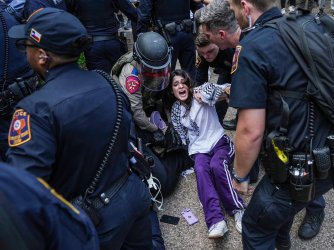
Texas tramples First Amendment rights with police crackdown of pro-Palestinian protests
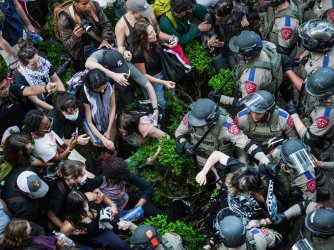
Here’s what students need to know about protesting on campus right now
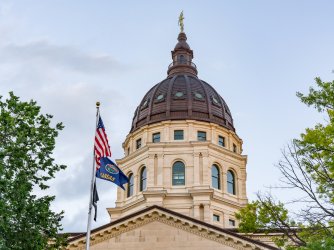
Kansas takes a stand for intellectual freedom
